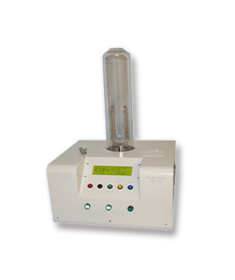
NewsInformation Center
What is the elevated temperature oxygen index?
2023/09/04
The Elevated Temperature Oxygen Index (ETOI) is a test method used to determine the minimum concentration of oxygen in an oxygen-nitrogen mixture that supports the combustion of a material under elevated temperature conditions. It is a measure of the material's flammability at high temperatures.
Any interested customers, please leave a message online, we will provide a quotation within 24 hours, welcome to inquire!
The ETOI test is an adaptation of the standard Oxygen Index (OI) test, which measures the flammability of a material at room temperature. In the ETOI test, the specimen is subjected to a higher temperature, typically around 50°C (122°F), to simulate conditions closer to those encountered in real-life fire scenarios.
During the test, the material specimen is placed vertically in a test chamber, and a mixture of oxygen and nitrogen is fed into the chamber from the bottom. The oxygen concentration in the mixture is progressively increased from a low level. The minimum concentration of oxygen at which the material is able to support sustained combustion is recorded as the Elevated Temperature Oxygen Index.
The ETOI value is expressed as a percentage, representing the minimum oxygen concentration required to support combustion. A higher ETOI value indicates that the material is less flammable, as it requires a higher oxygen concentration to sustain combustion.
The ETOI test provides valuable information about a material's resistance to ignition and burning at elevated temperatures. It is often used in the assessment of materials used in environments where high temperatures are present, such as in aerospace applications or certain industrial settings.
It is important to note that the ETOI test is just one of several tests used to evaluate the fire behavior of materials. Other tests, such as the Cone Calorimeter Test or the Heat Release Rate Test, may provide a more comprehensive understanding of a material's flammability characteristics.
What should you pay attention to when operating temperature oxygen indexer?
1. Safe operation: Ensure that you familiarize yourself with the instrument's operating manual and follow all safety procedures before performing any experiments. This includes the proper use of personal protective equipment (e.g., gloves, goggles) and following fire safety measures.
2. Calibrate Instruments: Before performing tests, ensure that instruments are properly calibrated and in good working order. Calibration includes checking temperature sensors, flow meters, and sample holders for accuracy.
3. Sample Preparation: Prepare samples and handle them appropriately as required by the test standard. Ensure that the size of the sample meets the requirements, and pay attention to the sample shape and surface treatment and other factors on the test results.
4. Temperature control: When the instrument is operated, it is necessary to control the temperature in the test chamber, usually 50°C. Ensure that the instrument has accurate and stable temperature control in order to obtain reliable test results.
5. Test Atmosphere: Use the standard required atmosphere combination (a mixture of carbon monoxide and nitrogen) for testing. Ensure that the gas flow rate is accurate and that the atmosphere concentration is set in strict accordance with the specification.
6. Record data: Record all test data provided by the instrument, including temperature, atmosphere concentration and sample combustion. These data will be used for subsequent analysis and evaluation of results.
7. Maintenance and Cleaning: Perform regular maintenance and cleaning of the instrument to ensure that it works properly. Remove any dirt or residue that may affect the test results.
8. Data analysis and reporting: After completing the test, analyze the test data and prepare a detailed test report according to the requirements of the standard. The report should include test conditions, sample information, analysis of results, and any observed phenomena.
These considerations help to ensure proper operation of the temperature oxygen indexer, obtain accurate and reliable test results, and improve laboratory safety. If there are any questions or uncertainties, the instrument manufacturer or a professional should be consulted promptly.
Any interested customers, please leave a message online, we will provide a quotation within 24 hours, welcome to inquire!
Previous: EN ISO 11925 Building Materials Combustibility Test Chamber
N e x t : 6 Stations Leather Electric JIS Rotary Dyeing Rubbing Color Fastness Tester




